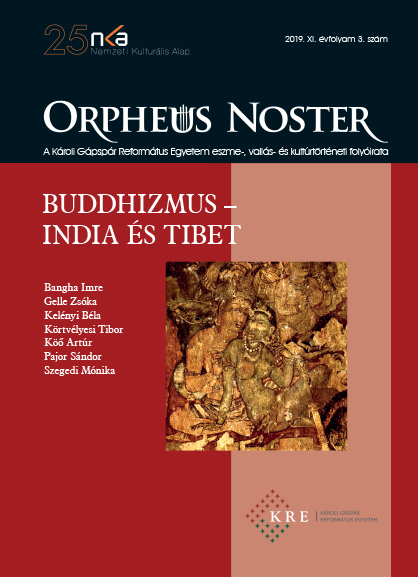„Furcsa magyar vágy” – Baktay Ervin nyugat-tibeti útja
Ervin Baktay’s Journey in Western Tibet
Author(s): Béla KelényiSubject(s): History, Geography, Regional studies, Recent History (1900 till today)
Published by: Károli Gáspár Református Egyetem
Keywords: Alexander Csoma de Kőrös; Ervin Baktay; Western Tibet
Summary/Abstract: Ervin Baktay arrived in India in June 1926. He regularly published his impressions in the newspapers of Budapest, under the title Oriental Letters. He first visited Kashmir in summer 1927, where, recalling the journey Alexander Csoma de Kőrös had taken from Kashmir to Western Tibet in 1822, the idea of following in Csoma’s footsteps formulated in his mind. Furthermore, when he read the biography of Csoma published in 1885 by Tivadar Duka (who had served as a medical officer for the British army in India), Baktay found that Duka had not travelled to all the places Csoma had visited in Western Tibet, and so had collected no direct data about Csoma’s activities there. Eventually, in the summer of 1928, Baktay travelled from Kashmir to Leh, capital of Ladakh in Western Tibet, and then to Padum, capital of Zanskar. From here he sought out Csoma’s former places of residence. In the Zangla ‘monastery’, with the help of his Tibetan informant, he marked the room in the building where Csoma had stayed, and in the Phuktal Monastery he installed a plaque commemorating Csoma’s sojourn there. Baktay’s main motivation was to be the first Hungarian to retrace Csoma’s journey to Western Tibet (only later did he become aware that he was mistaken in this belief), and his main objective was to find and describe the hitherto unknown places in Zanskar where Csoma had once resided. He wrote about his trip in a two-volume travelogue (Top of the World), published in 1930, which attained unprecedented popularity. Besides correcting the names of certain settlements, the most important achievement of his journey was, by describing the local living circumstances from wide-ranging perspectives, to create a lasting image of Csoma’s activities in Western Tibet, which is the image that prevails to the present day.
Journal: Orpheus Noster. A KRE Eszme-, Kultúr-, és Vallástörténeti Folyóirata
- Issue Year: XI/2019
- Issue No: 3
- Page Range: 63-81
- Page Count: 19
- Language: Hungarian

